A while back, we wrote about Andalusian style interior design as well as Scandinavian and minimalistic designs.
This time, we wanted to invite you to somewhere more exotic. Africa and its safari-style interior design.
Safari-style indoors - exotic every day
The style of safari trends every year. Just like in the fashion industry, although in a slightly modified form.
This year, however, this trend seems to be more prominent than usual and looks like it will stay indoors for longer.
The basics of this trend are very classic and fit into many interiors. What dominates here is subdued colours and natural materials complemented by slightly bolder African, animal or colonial motifs.
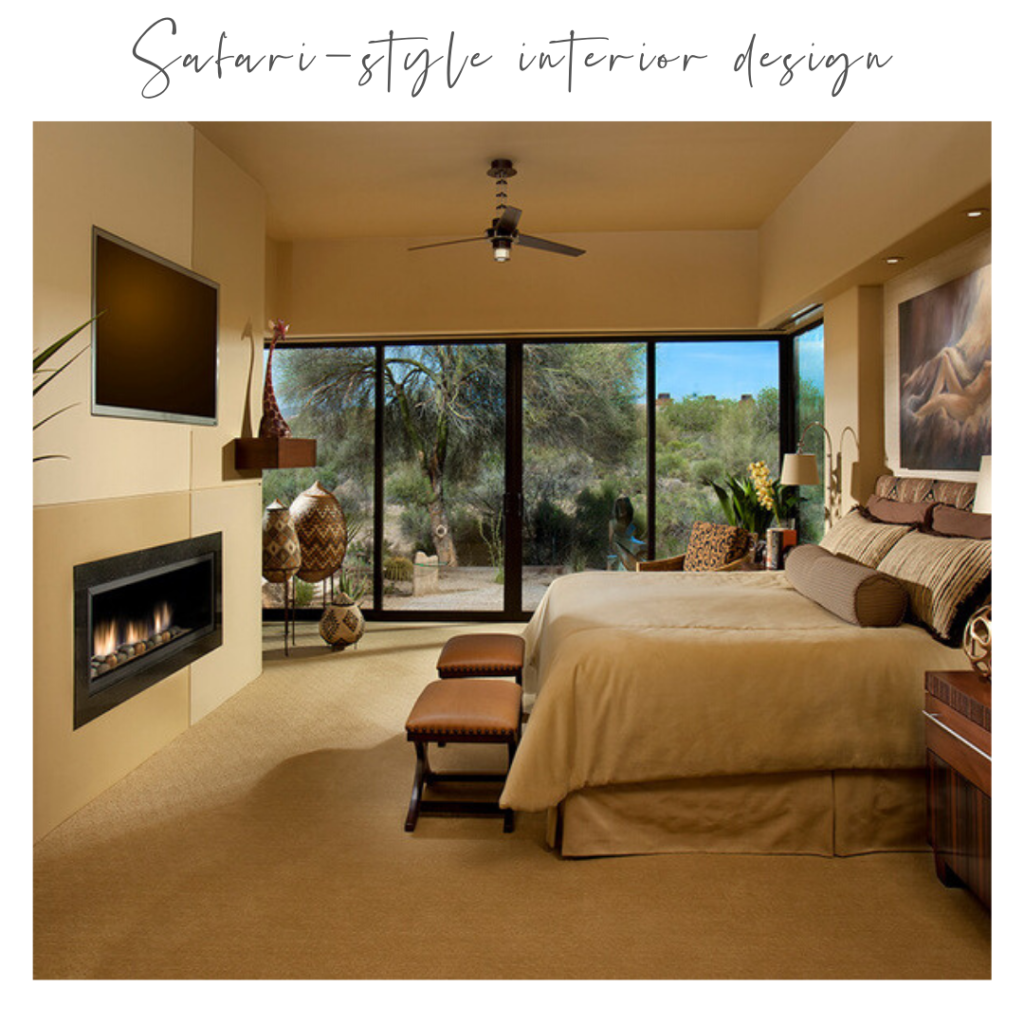
The genesis of safari style
The terms safari and safari-style were widespread in the nineteenth century and are inherently associated with Africa and colonialism.
It is said that the style of safari - the lifestyle, fashion or interior design - was born when European travellers and colonisers watched or hunted wild animals, which was associated with certain rituals.
At sunrise, they would get up early to hike or hunt. In the afternoon they would rest, and in the evenings tell stories about it over dinnertime.
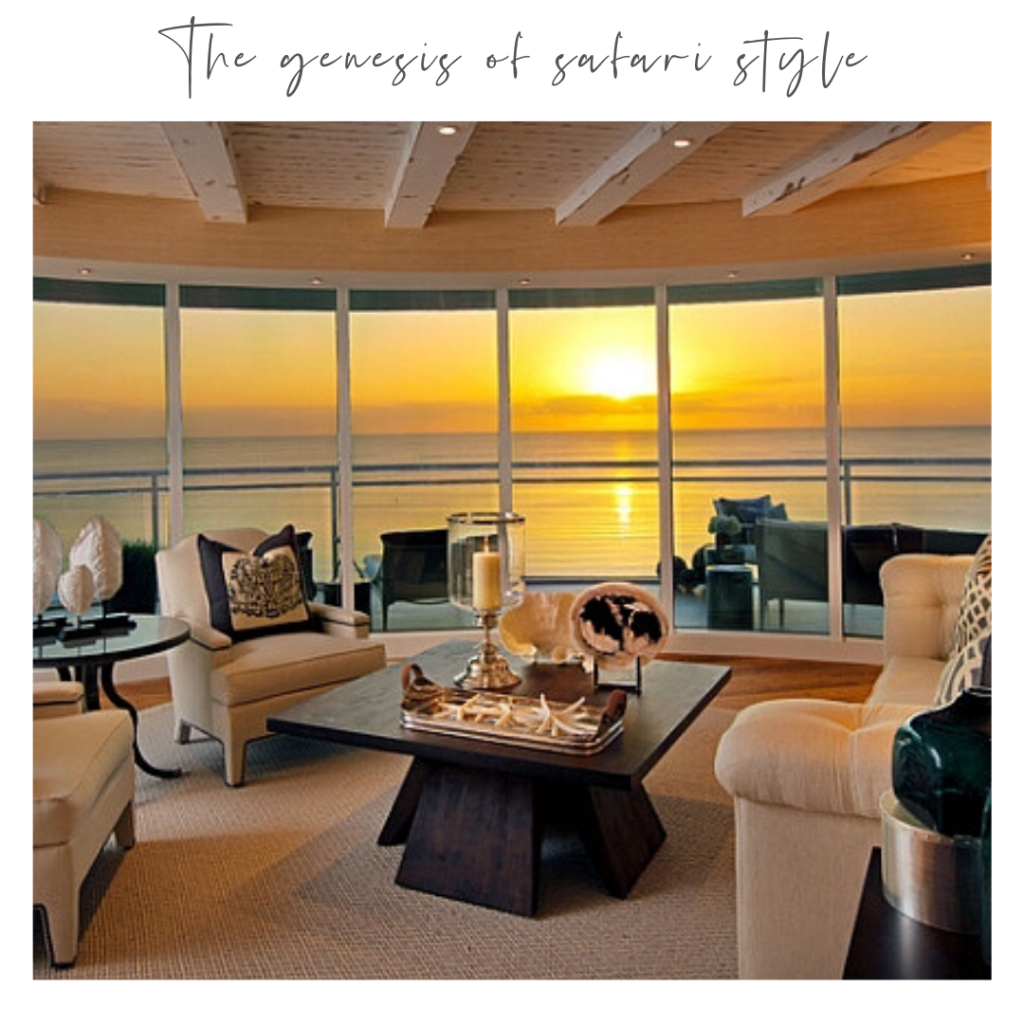
The very word 'safari' originates from Swahili and it means 'travel'. It started being associated with something distant, romantic and adventurous. It quickly became accepted and extremely popular in literature and films. What followed it was fashion and interior design.
In today's article, you will learn how to create a stylish interior in a few simple steps, reminiscent of a safari that will take you to the heart of Africa.
How to decorate the interior in a safari style?
The interior in the style of safari is calm and subdued - like an African landscape, but also dynamic and contrasted - like African wild, virgin flora and fauna. It all depends on the elements you choose from among a wide range of possibilities.
This style, due to its history, is the answer for lovers of exotic and exclusive interiors (after all, back in the days, only wealthy people could afford African expeditions).
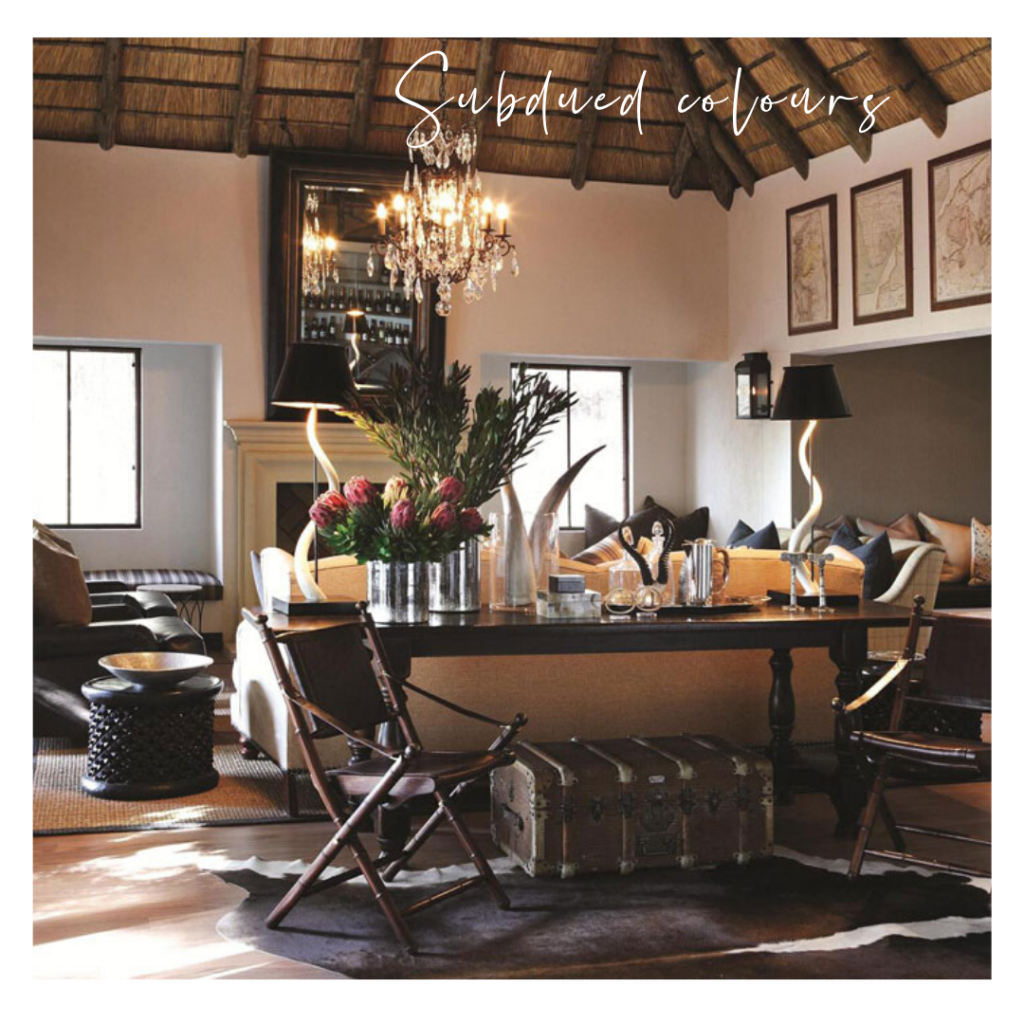
If you are in favour of a calmer environment, but want to diversify the interior, you can use a few accessories in this style. Thanks to the combination of African influences and European style of the old world, it will give the interior in each decor a bit of wild touch.
For a safari-style interior, start from scratch - focus on typical African colours and materials for walls and floors. Floors should be made of cool materials, such as terracotta, possibly covered with hand-woven pavements. On the other hand, when it comes to walls, the material is less important. Natural colours are preferred in this type of interior.
Intense colours
Typical colours for a safari-style interior additions will be shades from warm, off-white to dark beige, khaki, terracotta, fiery red, deep yellow or chocolate; colours which are directly derived from African landscapes - shades of sand, desert, subdued green vegetation of the desert and savanna.
These colours will give the interior a soft, natural atmosphere. For those who like stronger colours, such neutral, warm colours can of course only be a background for more bold accents of safari accaesories.
Natural materials
Typical materials will be natural: wood (especially exotic), bamboo, rattan braids, jute, cane, linen, cotton, raw silk and stone. They occur both on building materials (flooring material, wall cladding), furniture and accessories.
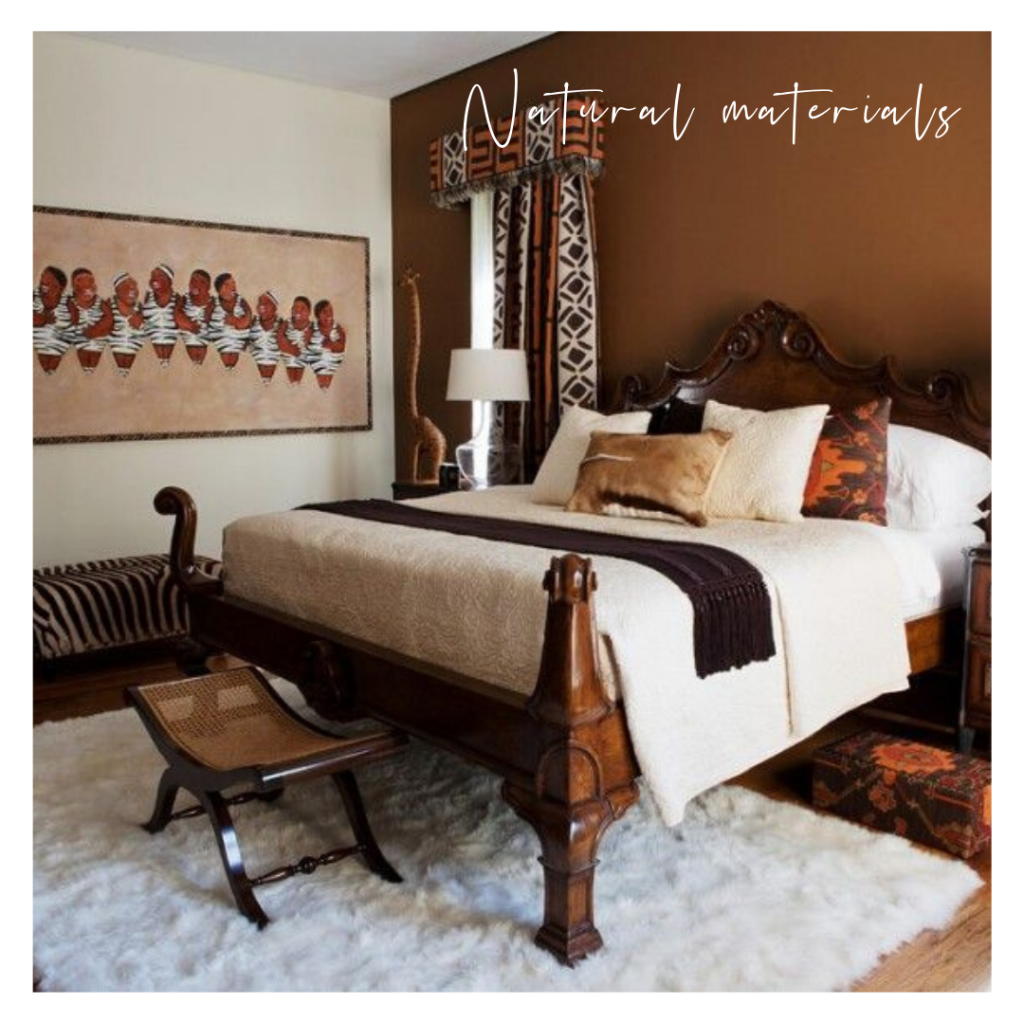
Safari-style accessories
This style is unobtrusive and comfortable, with a bit of rustic elegance. Safari-style accessories, such as African masks, animal motifs or hand-made metal or wooden utensils, will give the interior a slightly more distinctive expression. If you like the safari trend, but do not want to change the whole interior, decide on add-ons.
Furniture
Safari-style furniture partly overlaps with colonial-style furniture - it will be primarily furniture from local materials such as exotic wood or rattan, supplemented with light, easy to transport elements with fragments of the canvas - folding chairs, hammocks.

Fabrics
African style fabrics come in many weaves, textures, colours and patterns. These can be linen curtains in a natural colour, a veil of thin curtains and mosquito nets, decorative pillows and upholstery with animal or geometric motifs as well as hand-woven rugs, rugs, bedspreads, wall tapestries. The colours of these fabrics can be a bit bolder than in the case of wall colours, the threads are (or were) often made from local plant dyes. So it will be plum, yellow, red, brown and even black.
Ceramics and dishes
Safari is also traditional ceramics and dishes made of other materials, e.g. wood. These types of elements are now very popular and easily available. They will be even slender vases, jugs, simple plates and trays - or on the contrary - richly and colourfully decorated.
Tribal elements
To get a touch of authentic African interior design, choose traditional items made in the style of naive art or tribal masks and shields. They can become a central element of your interior design, introducing an exotic atmosphere.
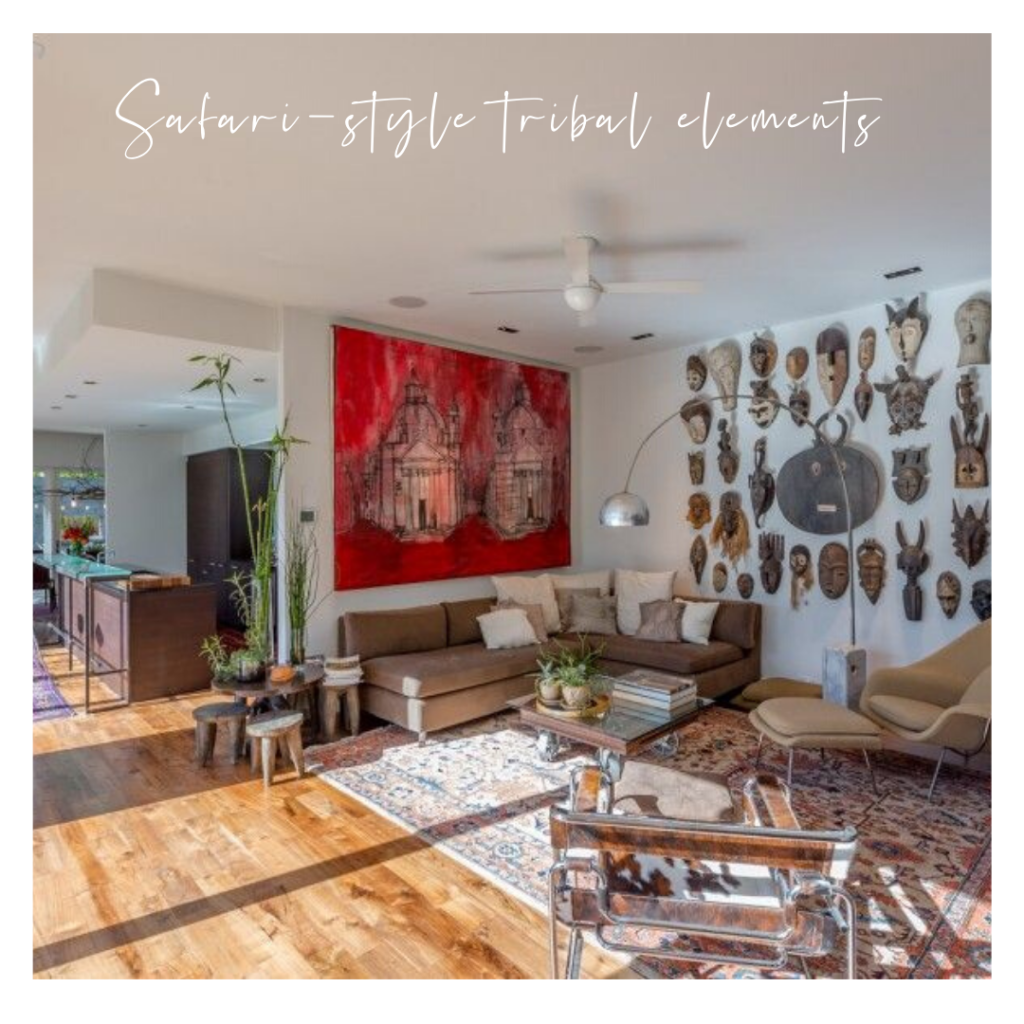
Expeditionary accessories
Safari style, as already mentioned at the beginning, was born, among others, during European expeditions to African lands. Accessories in the style of European travellers so elements such as globes, compasses, bound historical (or not necessarily) maps, old trunks.
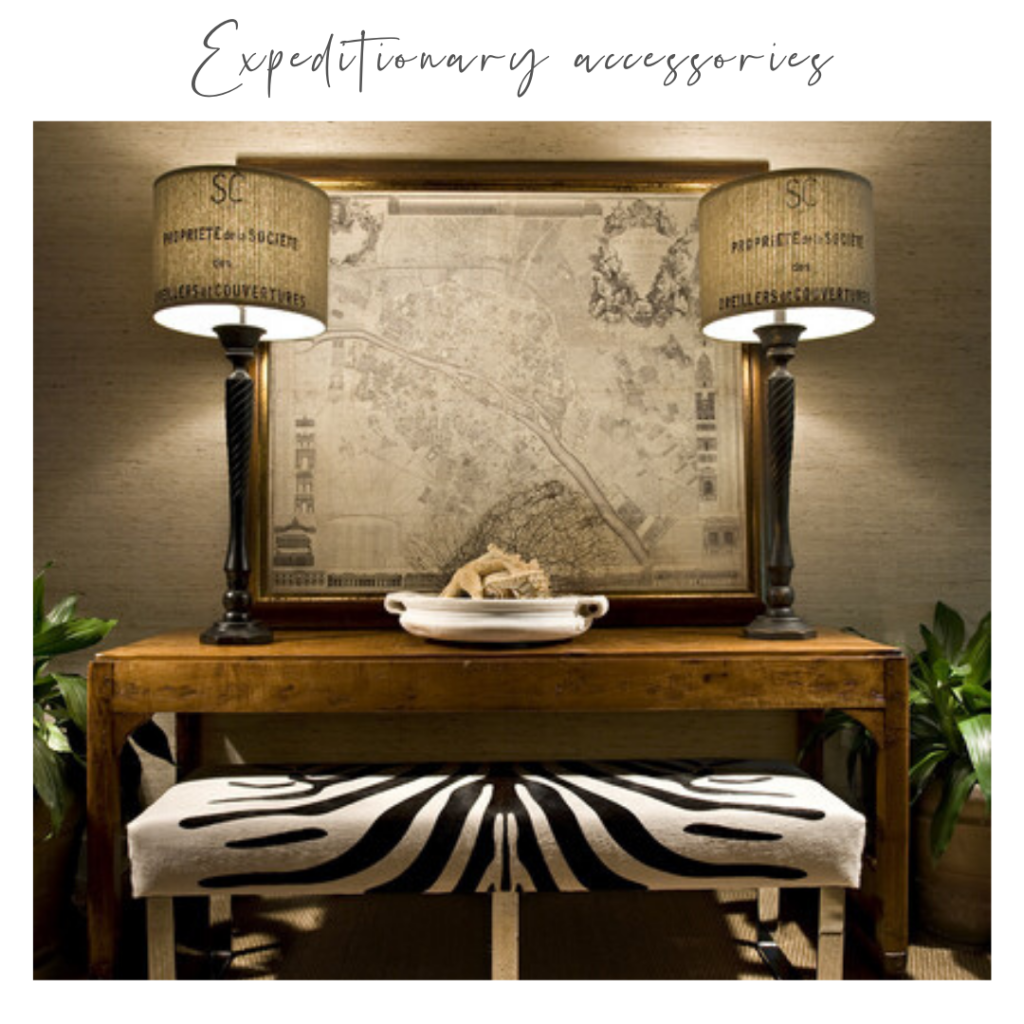
Who is the safari-style for?
You no longer have to travel thousands of kilometres to soak up the wonderful atmosphere of African savannahs and deserts. Although this is not quite the same, you can bring a substitute in the form of a safari-style design to your four walls, receiving an interior full of warmth and a wealth of sensations.
Therefore, if you like exotic climates and unique interiors that stand out from the rest, then the safari-style is perfect for you.

